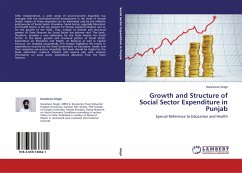It intends to provide an over all picture of the sculpture and art in the Punjab region mainly during the 2nd and 5th centuries A.D. though relevant later works up to 17th century are also studied. All three religions of the time, Hinduism, Buddhism and Jainism visualized art from a common platform. All the sculptures brought into study, definitely were in use either for worshiping or ritualistic celebration. A typical form of female figure, the S labhañjik is encountered in almost every noted school of art in the Punjab of this era. This figure is depicted with numerous variations and styles, typically as a tree vignette. The tree not only occupies an important place in Nature but has also been a part of the cult of the trees and tree worship. It has been worshiped as a symbol in the form of a phallus, many a time it appeared as a world tree or as the wish-fulfilling tree, the Kalpa Vriksha. The overall work revealed in Punjab, is of liberalism. Freedom of expression was the reason artists excelled in their work. Sanghol indeed was the Uch - p nd - the high mound not alone by what it had underneath the soil that remained unearthed, but by what it supported too!








